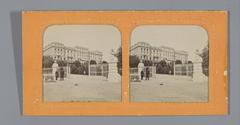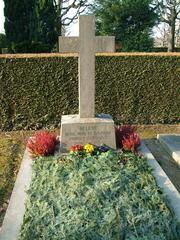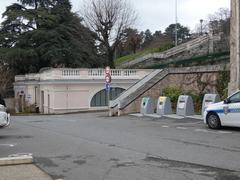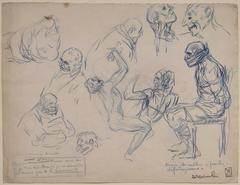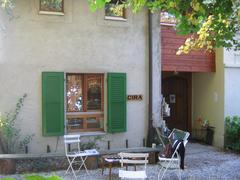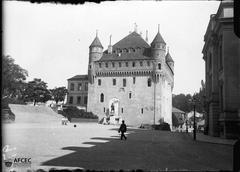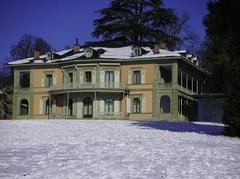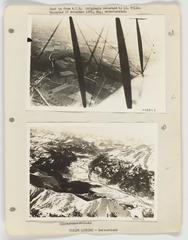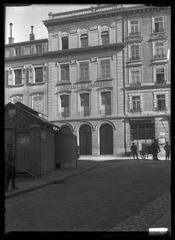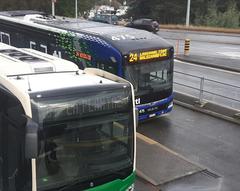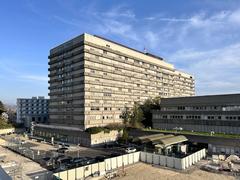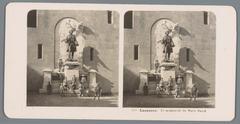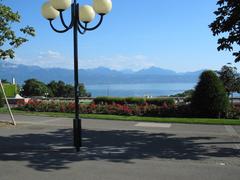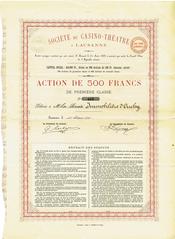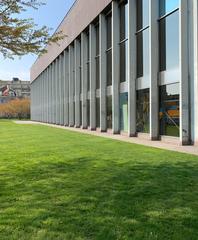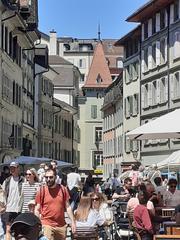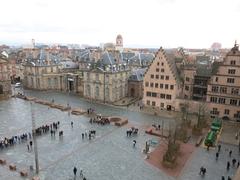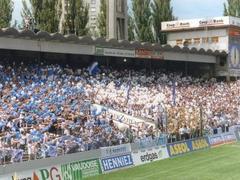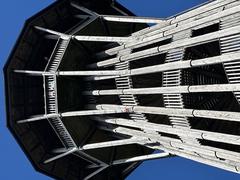Pont Chauderon: Visiting Hours, Tickets, and Historical Significance in Lausanne
Date: 04/07/2025
Introduction
Located at the heart of Lausanne, Switzerland, Pont Chauderon is a historic and architectural icon that illustrates the city’s evolution from a riverside town into a modern urban hub. Constructed between 1904 and 1905 by architects Alphonse Laverrière and Eugène Monod, in collaboration with engineers Louis de Vallières and Albert Simon, this remarkable bridge showcases the pioneering use of reinforced concrete and elegant urban design. Today, Pont Chauderon serves as a vital artery for traffic and pedestrians, connecting key city districts and offering panoramic views of Lausanne’s urban landscape. This guide provides essential information on visiting Pont Chauderon, its historical and cultural relevance, accessibility tips, and nearby attractions, ensuring a comprehensive and enriching experience for every visitor (vd.ch, lausanne.ch, Lausanne Tourisme).
Table of Contents
- Introduction
- Historical Overview
- Visiting Information
- Photo and Viewing Spots
- Frequently Asked Questions (FAQ)
- Planning Your Visit
- References
Historical Overview
Origins and Construction
Pont Chauderon was conceived during Lausanne’s rapid urban growth at the turn of the 20th century, built to traverse the deep Flon valley, which once separated city districts and hindered connectivity. It became the second of three major bridges—after Grand Pont and before Pont Bessières—intended to unify Lausanne’s expanding neighborhoods (vd.ch). The bridge’s design emerged from a public competition, ultimately awarded to Laverrière, Monod, de Vallières, and Simon for their innovative approach.
Architectural Significance
With a length of approximately 240 meters, Pont Chauderon features robust concrete arches—a cutting-edge technology at the time—paired with refined Art Nouveau details. Its construction enabled longer spans and greater durability, while decorative balustrades and thoughtful urban integration emphasized both utility and aesthetics (nfic.ch). The bridge’s alignment with avenue Louis-Ruchonnet facilitated direct access from the main railway station to Place Chauderon and the western districts, making it a model of early 20th-century infrastructure.
Urban Development and Heritage
Pont Chauderon played a crucial role in Lausanne’s westward expansion by improving connections between the city center and outlying neighborhoods. Over the years, it adapted to evolving mobility needs, transitioning from trams and horse-drawn carriages to accommodate modern vehicles and public transport. Recognized as a Swiss cultural heritage site, the bridge has undergone extensive restoration—including a major renovation from 2016 to 2017—to preserve its historical character and ensure safety (nfic.ch).
Notable Events and Transformations
The bridge has witnessed significant urban changes: the infilling of the Flon Valley in the early 20th century reduced the height of its arches and transformed the surrounding landscape (notrehistoire.ch). Place Chauderon, at the northern end of the bridge, evolved into a dynamic urban node hosting markets, public gatherings, and transport exchanges. Today, Pont Chauderon stands as both a functional infrastructure and a symbol of Lausanne’s layered history and urban identity.
Visiting Information
Hours and Entry
Pont Chauderon is a public thoroughfare open 24 hours a day, year-round. There are no entry fees or ticket requirements—visitors may walk, cycle, or drive across the bridge at any time (Lausanne Tourisme).
Accessibility
- Pedestrians: Wide sidewalks on both sides ensure safe passage for walkers and strollers.
- Cyclists: A dedicated cycle lane supports safe cycling.
- Wheelchair Users: The bridge and surrounding areas are wheelchair accessible; nearby public spaces, including Bibliothèque Chauderon, provide accessible facilities.
- During Renovations: Ongoing works (through November 2025) may require temporary route changes, but access for pedestrians and those with reduced mobility is maintained (24heures.ch).
Public Transport and Travel Tips
- By Bus/Trolleybus: Lines 3, 6, 9, and 21 stop at or near Place Chauderon, providing direct links to the main train station and other city districts.
- By Metro: The Lausanne-Flon metro station (M1 and M2 lines) is a short walk away.
- By Car: Parking Chauderon and Parking Mon-Repos are nearby, but using public transport or walking is recommended due to Lausanne’s hilly terrain and central location (Lausanne Tourisme).
Travel Tips
- Best Times: Daylight hours are ideal for photography and scenic views; the bridge is illuminated at night for a different perspective.
- Language: French is the main language, but English is widely understood in tourist areas.
- Safety: The area is monitored and generally safe at all hours.
Nearby Attractions and Amenities
Key Points of Interest
- Place Chauderon: A lively public square with shops, cafés, and market stalls.
- Flon District: Renowned for its creative boutiques, restaurants, nightlife, and street art (TGV Lyria).
- Bibliothèque Chauderon: Lausanne’s largest public library, offering reading rooms, Wi-Fi, cultural events, and accessibility services (Bibliothèque Chauderon, library opening hours).
- Fièvre Skate Park: A hub for skaters and artists beneath the bridge.
- Plateforme 10 Arts District: The city’s contemporary art center.
- Lausanne Cathedral & Old Town: Major landmarks within walking distance.
Dining and Shopping
The Chauderon area offers a range of dining options, from bakeries and cafés to international restaurants. The Flon district, nearby, features creative boutiques and vibrant nightlife (Observing Leslie).
Photo and Viewing Spots
- Central Arches: Offer panoramic city views, especially at sunrise and sunset.
- Place Chauderon & Avenue de Beaulieu: Ideal for capturing the bridge’s architectural details and urban context.
- Underneath the Bridge: Explore murals and vibrant urban scenes.
- Golden Hour: Early morning and late afternoon provide the best light for photography.
Frequently Asked Questions (FAQ)
Is Pont Chauderon open to pedestrians and cyclists?
Yes, the bridge is open 24/7 to both pedestrians and cyclists, with dedicated paths for each.
Is there an entrance fee or ticket required?
No, Pont Chauderon is a public bridge and free to visit.
Is the bridge accessible for people with disabilities?
Yes, the bridge features barrier-free access; nearby metro elevators and sidewalks are wheelchair-friendly.
How can I reach Pont Chauderon via public transport?
Multiple bus, trolleybus, and metro lines serve Place Chauderon and the surrounding area.
Are guided tours available?
While not specific to the bridge alone, many city walking tours include Pont Chauderon as a highlight.
What is the best time for photography?
Visit during daylight for scenic views; evenings for city lights and atmosphere.
Planning Your Visit
- Weather: Dress in layers and bring an umbrella during rainy months.
- Currency: Swiss Franc (CHF); cards are widely accepted, but cash is useful for markets.
- Wi-Fi: Available at Bibliothèque Chauderon and many nearby cafés.
- Restrooms: Accessible at the library and local shopping centers.
- Events: Check Lausanne Tourisme for festivals, markets, and guided tour schedules.
- Safety: Remain attentive to personal belongings in busy areas.
Include Pont Chauderon in your walking itinerary to connect Lausanne’s old town, Flon district, Place de la Riponne, and the cathedral for a well-rounded city experience.
References
- Pont Chauderon in Lausanne: Visiting Hours, Tickets, and Historical Insights, 2025, VD.ch
- Exploring Pont Chauderon: Access, History, and Lausanne’s Historical Sites, 2025, Lausanne.ch
- Pont Chauderon Visiting Hours, Accessibility & Guide to Lausanne Historical Sites, 2025, Lausanne Tourisme
- Pont Chauderon in Lausanne: Visiting Hours, History, and Tips for Visitors, 2025, NFIC
- Pont Chauderon Renovation Details, 2025, 24heures.ch
- Lausanne Architectural Landmarks, 2025, This City Knows
- Pont Chauderon Historical Context, 2025, NotreHistoire.ch
Final Recommendations
Pont Chauderon stands as a testament to Lausanne’s spirit of innovation, resilience, and cultural richness. Its free, 24/7 access, barrier-free design, and proximity to major city destinations make it an essential stop for every visitor. Explore the bridge’s scenic views, immerse yourself in local events, and discover the vibrant surroundings for a memorable experience in Lausanne. For additional resources and guided experiences, download the Audiala app and consult official tourism platforms.
